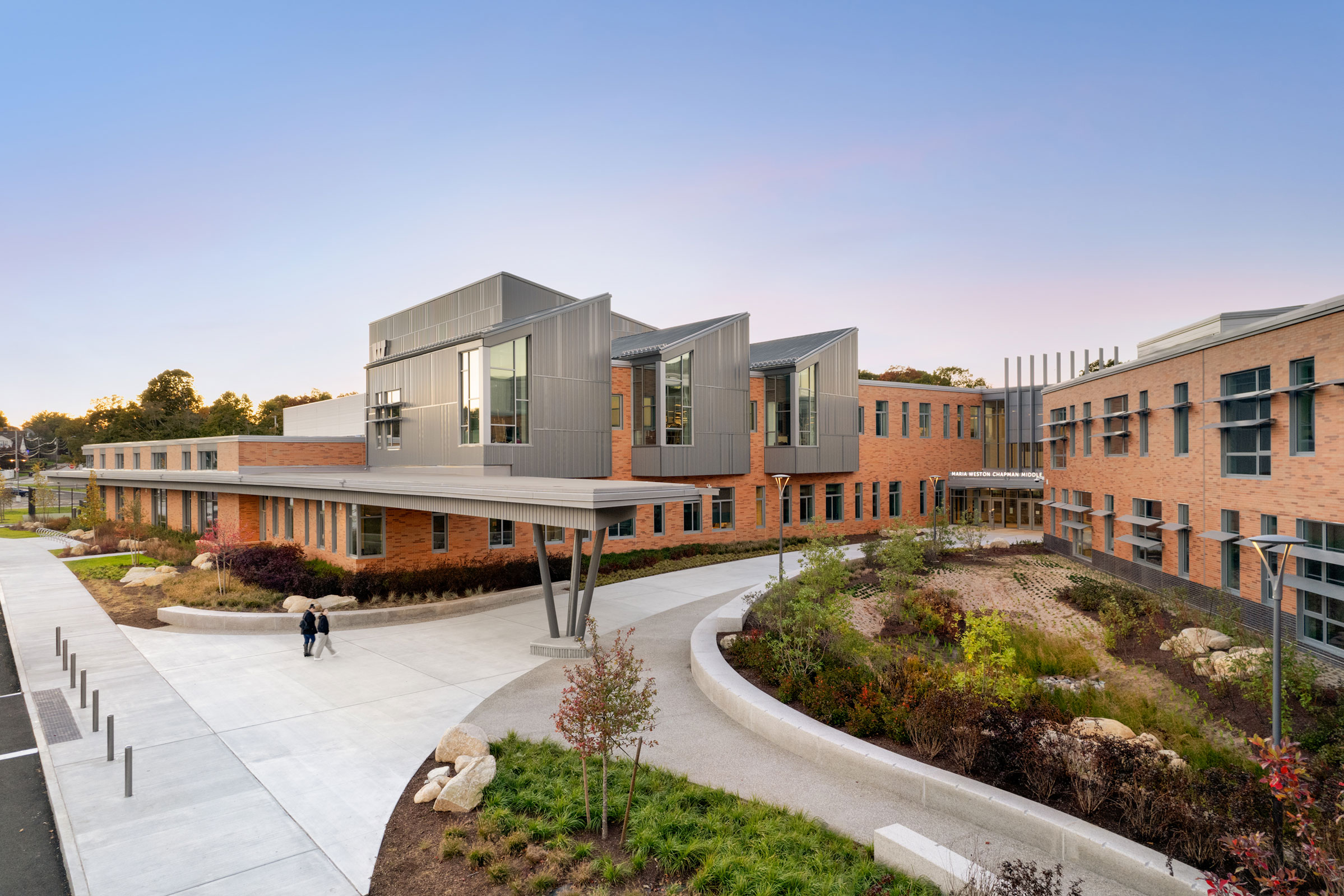Story at a glance:
- Healthy school design benefits students, communities, and the environment.
- Communities everywhere increasingly want schools that are sustainable, functional, and healthy.
- Daylighting is an example of a passive solar strategy that, when properly deployed, helps to improve spaces.
Educational facilities serve a vital role in the communities they serve. Whether K-12 or higher education, a well-designed school or campus can contribute to improved learning outcomes and a higher quality of life for students and residents alike.
The way students learn is changing rapidly, and schools must adapt and evolve to meet the needs of today and tomorrow. While it may be tempting to think of a school simply as a collection of classrooms and a cafeteria under a single roof, the reality is much more complex. A school must host and facilitate numerous tasks and activities, support and protect students and faculty, and be an efficient steward of its community’s environmental and economic resources.
Since its founding in 1969, Cambridge, Massachusetts–based HMFH Architects has established a national reputation as a leader in the design of innovative educational environments. Equipped with decades of research into how students learn, the firm is dedicated to creating spaces that enhance the learning experience.
“It began with one of our founders, Steve Friedlaender, who really paid attention to educational planning,” explains Bobby Williams, associate principal at HMFH. “He was at the forefront of working with schools to build educational plans and then design spaces around those plans. The adjacencies of spaces are very important in schools. It’s no longer just classrooms and corridors. We need more specialized, flexible spaces.”
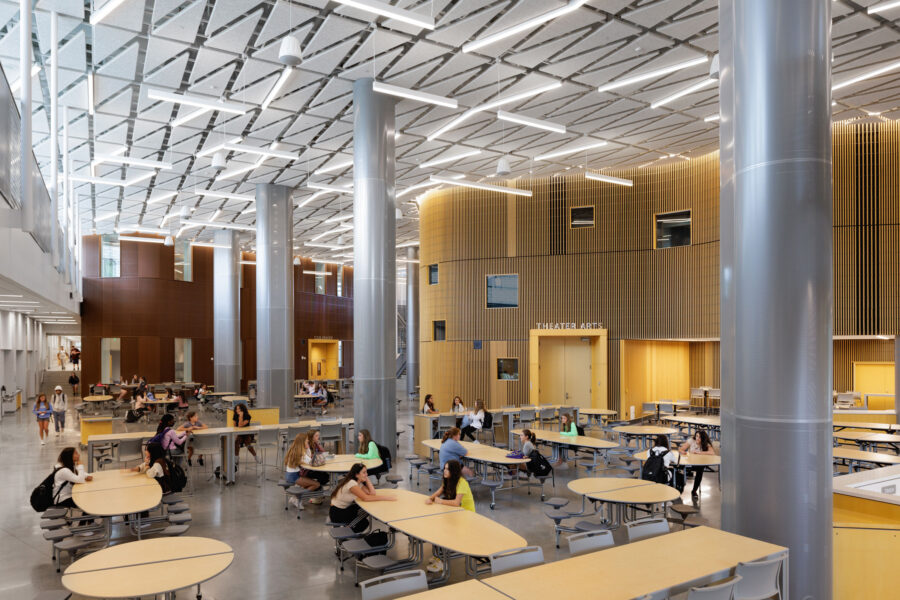
Inside the Town Square at Chapman Middle School in Weymouth, Massachusetts. Photo by Ed Wonsek
In traditional schools, students who require individualized learning or are engaged in collaborative projects may often be seen working in the hall. Williams describes widened corridors with built-in breakout spaces for students to do different types of multidisciplinary work.
When approaching the program for any school, it’s important to design spaces that are welcoming and bring people together. One of HMFH’s recent projects, the Maria Weston Chapman Middle School in Weymouth, Massachusetts provides a good example. Built to replace two middle schools with a 1,470-student facility, the new building was designed to provide equitable, elevated education.
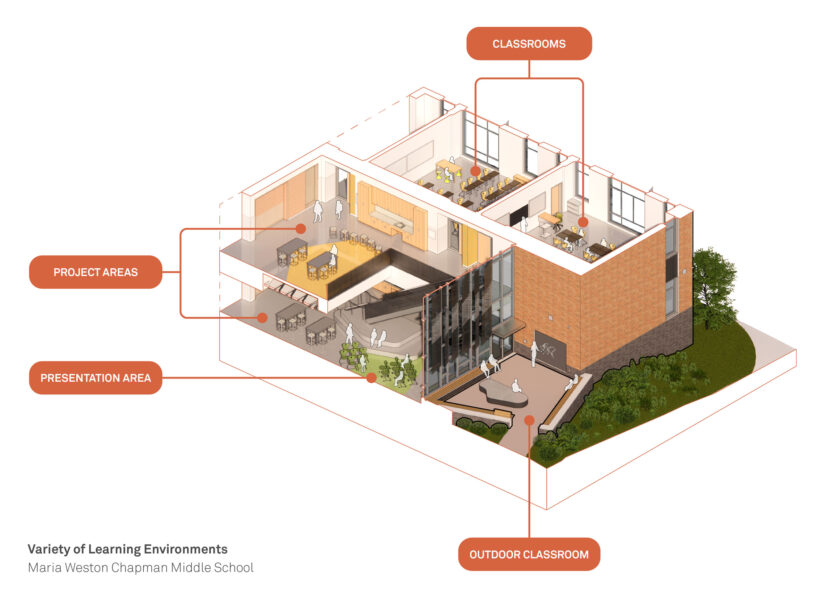
HMFH Architects designed collaborative areas inside Chapman Middle School. Drawing courtesy of HMFH Architects
A light-filled Town Square defines the heart of the school and is used for dining and community use. From that central point, three academic wings radiate out, each with specialized lab spaces that support the school’s focus on modern, STEAM-driven paths in career technical education (CTE).
“Our challenge was creating an environment that really supports student well-being in such a large school,” says Hazel Ryerson, architect with HMFH. “We applied many strategies, one of which was breaking down the large student population into smaller groups. Every grade has multiple teaching teams with their own project areas, which builds a sense of community. Each also has its own daylight-filled presentation area that’s adjacent to an outdoor classroom.”

Students learn inside a project area at Chapman Middle School in Massachusetts. Photo by Ed Wonsek
Communities everywhere increasingly want schools that are sustainable, functional, and healthy. Daylighting is an example of a passive solar strategy that, when properly deployed, helps to accomplish those goals. Quality natural light is a boost to productivity and mood, and passive strategies offer what Williams describes as “common sense sustainability.” With no operational and low maintenance costs, passive design is a smart approach from the start.
“With Chapman, we wanted to make sure every classroom had excellent daylighting, which was a challenge given each academic wing’s different orientation,” Ryerson says. “There are sunshades on the exterior of the building that change from horizontal to vertical. The opacity and the angles change with the goal of reducing glare in each classroom.”
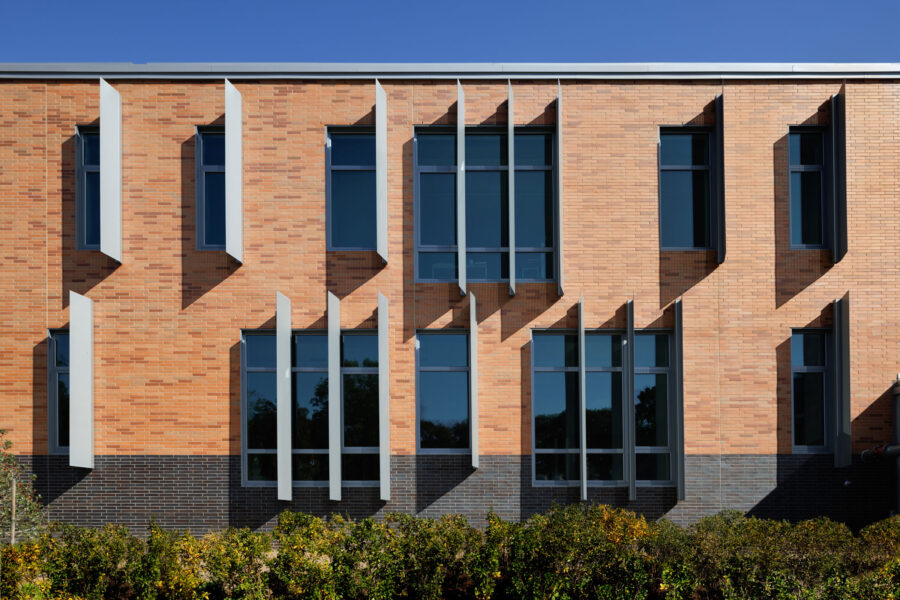
Sunscreens on Chapman Middle School change from horizontal to vertical. The opacity and the angles change with the goal of reducing glare in each classroom. Photo by Ed Wonsek
Effective daylighting is one of many strategies that can be employed in the quest for healthy, sustainable schools. HMFH has been in the game for decades. In the past putting solar panels on a school might have been considered action enough. Today there are many more factors to consider.
“We employ a holistic approach to sustainability,” Williams says. “In the early days of sustainability gaining traction, the focus was predominantly on energy conservation. At HMFH we have broadened this perspective to encompass the overall wellness of students. Beyond energy our approach extends to utilizing health-conscious materials in construction and implementing effective water and waste management practices. Research shows that for most children from age 5 to 18, outside of their homes, schools are where they spend most of their time. It is crucial to ensure these educational environments are constructed using materials that promote well-being.
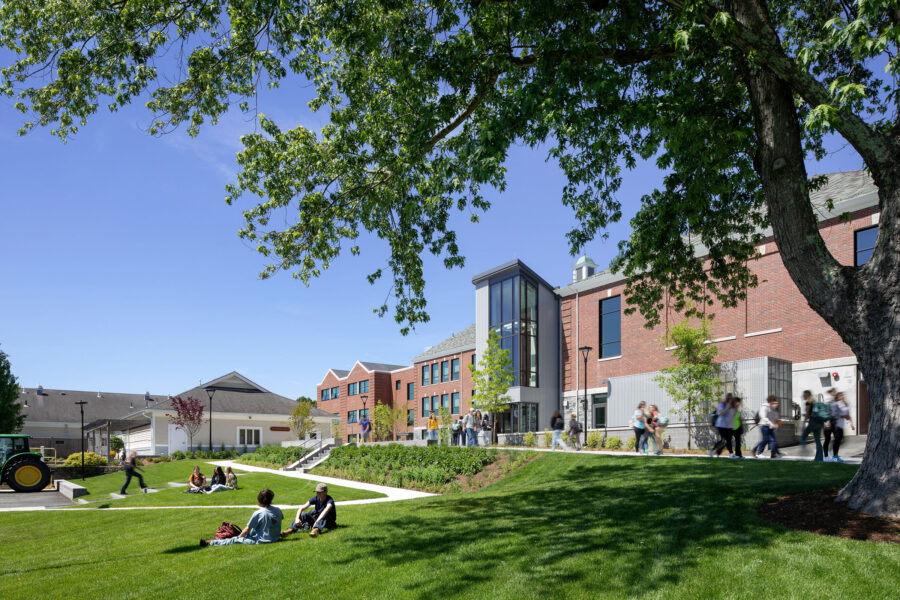
Gilbert Hall at Bristol County Agricultural High School. Photo by Ed Wonsek
In a very different type of project, HMFH balanced storm and water management, embodied carbon reuse, healthy materials, solar panels, and green roofs on the LEED Gold, and BE+ Green Building of the Year recipient, Bristol County Agricultural High School in Dighton, Massachusetts. When the career technical school expanded it needed a strategic approach, combining additions and renovations to connect the school’s seven career technical education programs with traditional academics.
The unique design of the campus combines indoor and outdoor learning spaces. The new Center for Science and the Environment is a living learning lab with flexible lab spaces, and the new net-zero-ready Dairy Barn further demonstrates the school’s commitment to the environment.
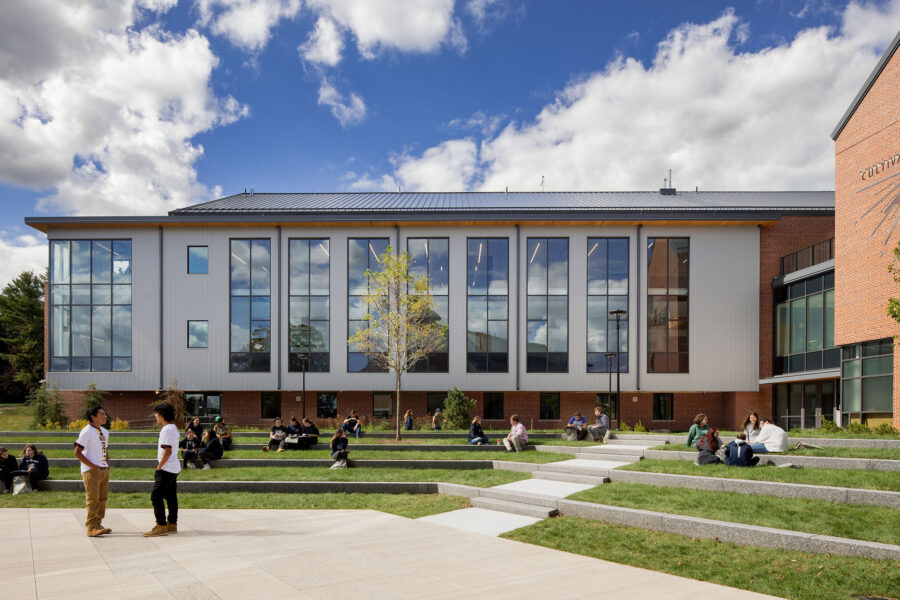
The Center for Science and the Environment, designed by HMFH Architects. Photo by Ed Wonsek
“The school’s campus abuts the Taunton River, so there was a desire to protect the river’s watershed,” Williams says. “We put a lot of focus into understanding how to manage the water onsite. For the new Center for Science and the Environment Building we have gutters that deliver water into rain gardens, a system that collects rainwater into a cistern which is used to irrigate the north side of the campus. Bristol Aggie is the first public school in Massachusetts with composting toilets, providing a notable achievement in water savings of 68% better than the baseline set by code. Even with the increase from 450 to 640 students, we were able to reduce the overall water consumption of the campus, which was not a small achievement.”
Delivering healthy, sustainable, effective schools to communities across the country is in the DNA of HMFH, but seeing the response to each individual project remains satisfying.
“It’s always rewarding when you go back and talk to staff and students at the school and hear how excited they are to be there,” Williams says. “HMFH’s focus on designing schools makes a big difference because our whole staff is committed to one building type that we live and breathe together. We learn from each project and our clients are always getting the best and the latest ideas and concepts from all the communities we work with.”
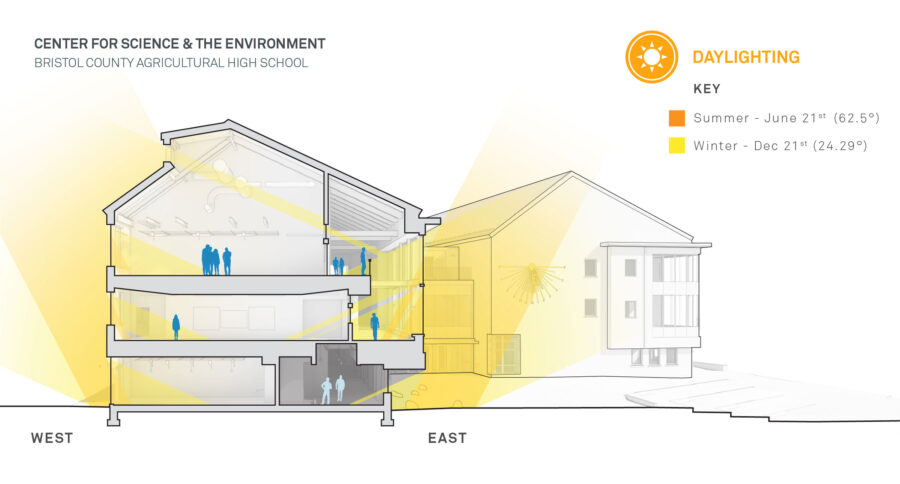
The architects studied how to best use daylighting at Bristol County Agricultural High School. Drawing courtesy of HMFH Architects
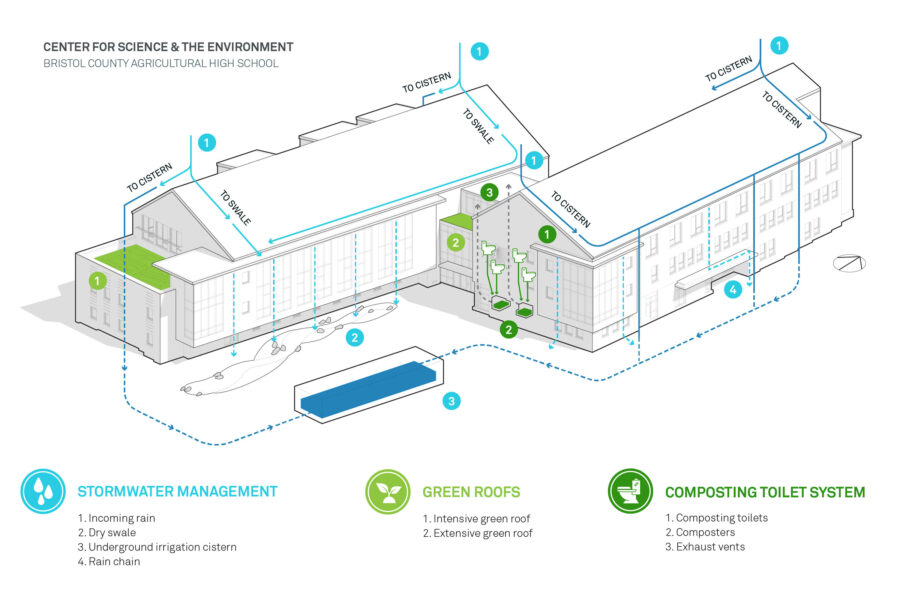
Water conservation and additional green strategies round out the design for the Center for Science & The Environment at Bristol County Agricultural High School. Drawing courtesy of HMFH Architects
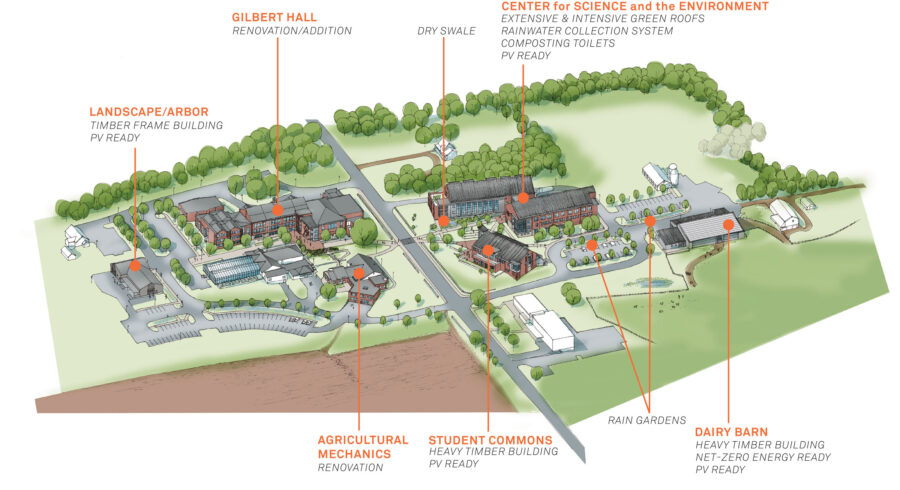
Sustainability features of Bristol County Agricultural High School. Drawing courtesy of HMFH Architects
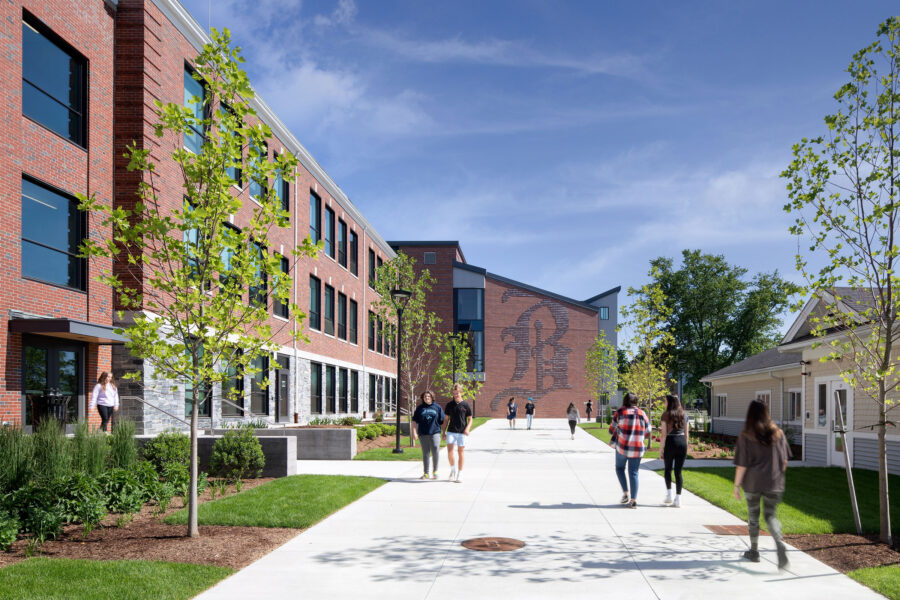
Outside Gilbert Hall, designed by HMFH Architects. Photo by Ed Wonsek

